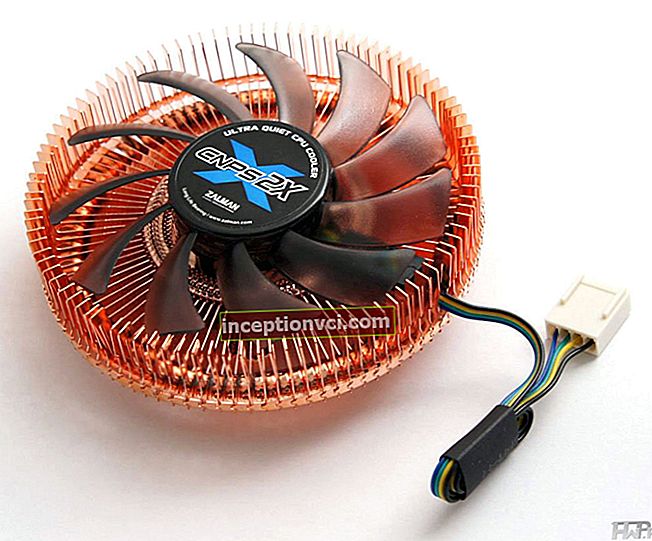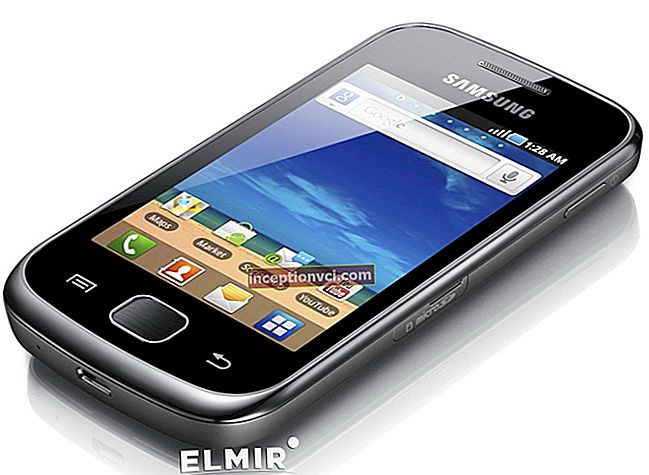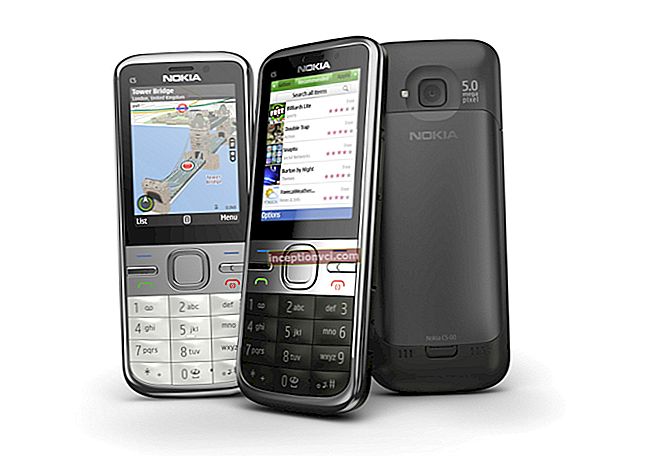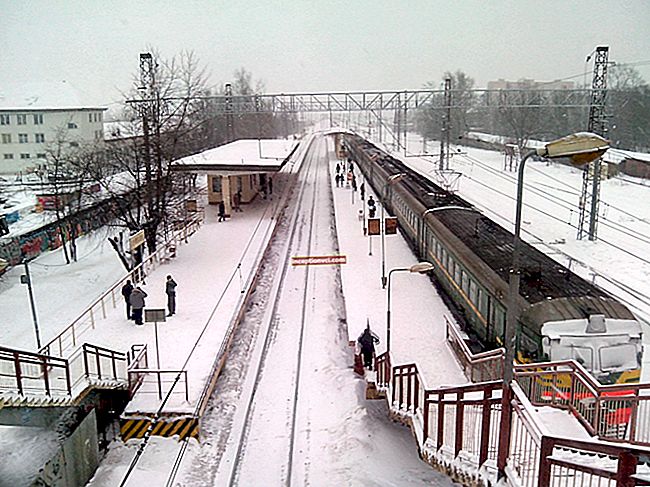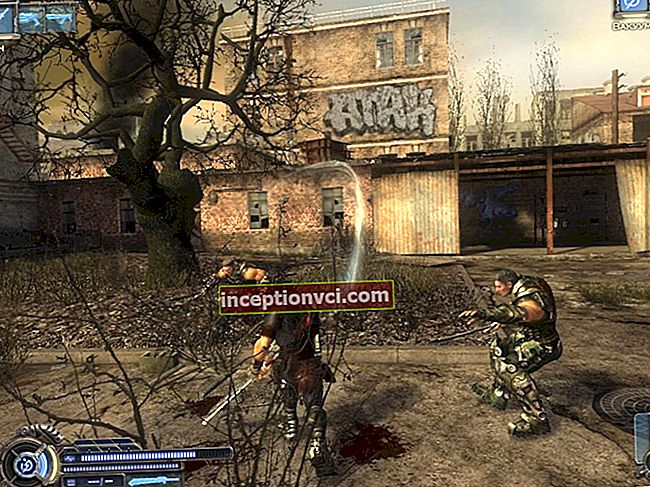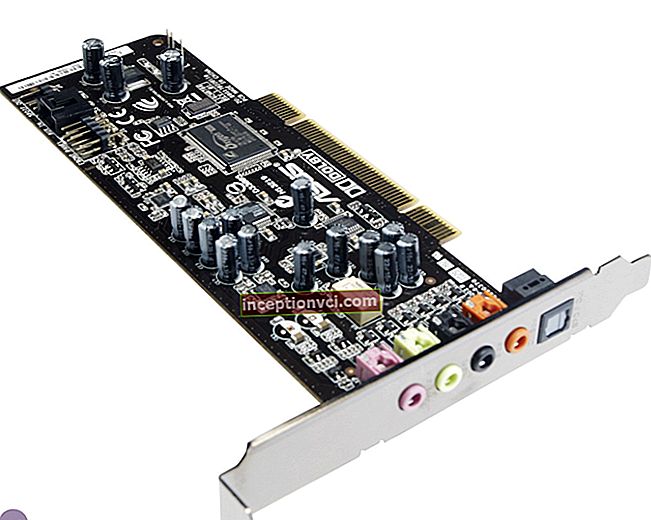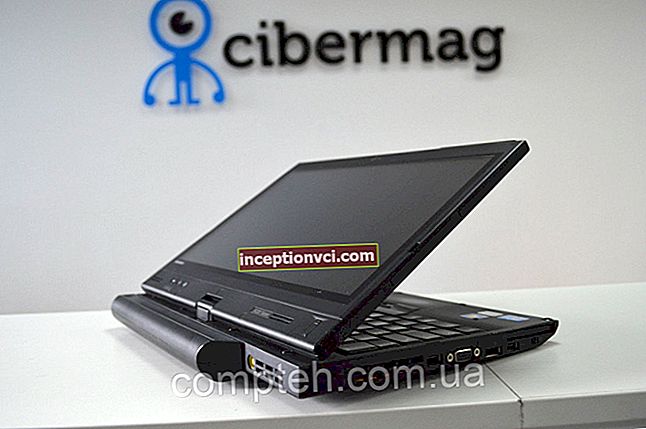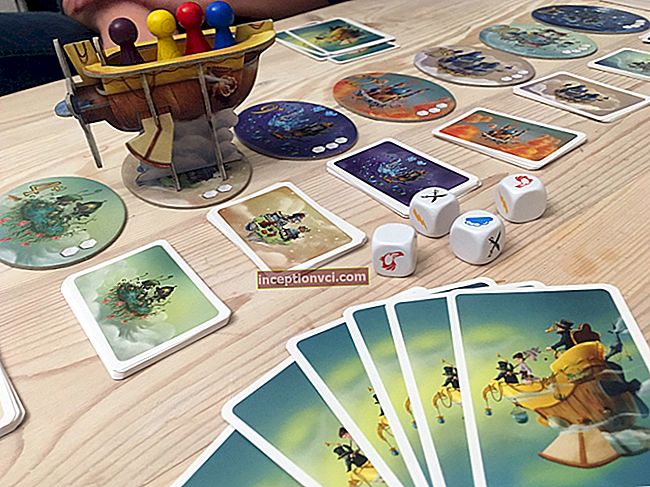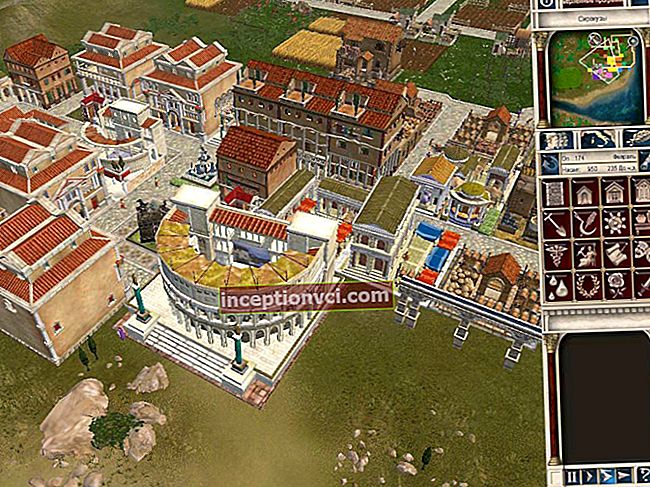The D3100 has a 14.2 megapixel CMOS sensor, which not only has live view but also allows you to shoot high definition Full HD 1920x1080 video. This is the first entry-level camera in the Nikon line to implement this feature, although it is limited in the recording time of one video in 5 minutes and the maximum video size up to 4Gb, it is still a huge breakthrough in realizing the capabilities of professional cameras at this level.
Nikon D3100 key features
- 14.2 megapixel DX format sensor
- 3.0 "LCD monitor (230,000 dots)
- sensor shake
- 11 focus points (with 3D tracking)
- IS0 100-3200
- HD video (1080)
Nikon D3100 vs D3000: Main Differences
The D3100 has significantly updated the previous model D3000, making it an attractive purchase for today in this segment of the camera market.
- Larger sensor resolution (14.2MP vs. 10MP)
- Ability to shoot Raw + Fine JPEG
- connector for Nikon GP1 GPS unit
- Additional wired connection via GPS connector
- Live view
- 1080p HD movies
- HDMI output
- Larger ISO range
- Continuous focusing (AF-F in live view)
- Improved focusing screen
Nikon D3100 specifications
body and design
At first glance, the D3100 looks a lot like its predecessor, but the changes are more significant. The higher resolution sensor brings several other improvements with this, such as live view and video recording capability. On the back of the body there is a lever to switch the screen to live view, which surrounds a small red-dotted button that serves as the recording start button; the previously merged '+' and 'i' functions are now presented on separate buttons (since both functions should be available in live view). Above is a new shooting mode dial, making the camera much more convenient to operate
In addition to these buttons and switches, the D3100 also received a proper rubber grip for a comfortable grip, rather than the rubberized coating that the D3000 possessed - a small change, but a big improvement in usability and reliability. Small grilles on the front and back hide the microphone, this is used during video recording and the speaker, which provides sound during playback, respectively. Finally, the D3100 gets two connectors under the enlarged rubber shutter on its left side, namely HDMI for movie playback and combined GPS
The D3100 is a similar size to its obvious competitors, the EOS Canon 1000D and Sony A290. As the newest camera in this group, it comes as no surprise that it offers the most extensive features including HD movie recording (albeit at 24fps) and the 14.2MP sensor makes the original look pretty impressive. Like the other two cameras here, Nikon offers a decent degree of external control and, as a result, requires very little immersive menus - all basic settings and command dials are on the body.
In hand
Thanks to its body design, the D3100 remains one of the nicest and most comfortable to hold cameras in its class. With its small size, it is very convenient to use. All buttons are very conveniently located and do not require any extra movements for pressing and adjusting them
Viewfinder specifications and screen
The D3100 has a very typical viewfinder specification for its camera class. It offers 0.8x magnification and 95% viewfinder coverage, which is pretty standard.
Viewfinder size
Let's compare the size of the viewfinder of the leading camera models in this class, taking into account the crop factor of different manufacturers.
| The D3100's viewfinder is nearly the same size as those offered by its immediate counterparts. It loses a bit of ground compared to the A290, but slightly outperforms the EOS 1000D. |
|---|
Viewfinder crop
Most cameras at this level crop a little when you view the viewfinder - in other words, you get a little more in the final image than you see through the viewfinder. Together with most of its competitors, the D3100 only shows 95% (vertically and horizontally) of the frame.
Nikon D3100: 95% viewfinder. |
|---|
elements on the case
| The most obvious change to the D3100 is the addition of a liveview lever and a movie recording button on the back of the camera. They are well placed so that they can be easily activated. | |
|---|---|
The D3100 gets two new ports.In addition to USB and AV sockets, HDMI. | |
| D3100 adds shooting mode dial, offering innovative 'Silent' mode | |
| The D3100 can use SD, SDHC or SDXC cards. | |
| The D3100 uses a new battery, EN-EL14. increased capacity relatively old in its predecessor | |
| The rear screen is unchanged from the D3000. and is represented by a resolution of 230,000 points |
Operation and controls
As mentioned above, on the back of the camera near the screen, a Live View switch lever with a video recording button is successfully implemented.
A summary of the major physical changes for the D3000 follows:
* Live View lever
* Disc mode switch (single, continuous, timer and quiet mode)
* Rubber pad
* More prominent AE-L / AF-L button
* Buttons on the more prominent back
* New 'i' button on the back (now split from the increase button)
* GPS and HDMI ports
Rear view of the camera with control buttons
The rear of the camera has been carefully positioned so that the main shooting controls are immediately available on the right side of the camera. The rear dial controls exposure parameters (in conjunction with the exposure compensation button just behind the shutter release button), while the configurable AE-L / AF-L button is also within easy reach.
In the meantime, the buttons required when operating the menu or on-screen display are all located at the bottom left side of the screen.
Above we have the main control dial for shooting modes, to the right of it switches: single mode, series of frames, timer and "quiet" mode
Front Panel
The front of the camera adopts a customizable function button and an active flash memory button. It's unusual to find this 'Fn' on this class of DSLR cameras, which means the D3100 will organically grow with you as you develop your own chosen way of shooting. You can assign one of four functions to this button (Image Quality / Size, ISO, White Balance, and Active D-Lighting) where we suspect ISO will probably be the most popular. The button is reasonably well positioned to control the use of your left slider
status screen
Through the Installation menu, you can choose the format of information display that you prefer - Graphic or Classic (with a choice of three color schemes for each). The information shown on these displays provides a quick overview of pretty much all camera settings, and direct access to any of the parameters.
quick menu
In both Graphics and Classic screens, pressing 'i' makes various shooting parameters editable (although if you are in Graphics view, the display will jump to Classic in the process). The D3100 has several more direct access points than the D3000, but these information screens remain the main interface for adjusting some key shooting parameters such as focus mode and white balance.
| The graphical presentation aims to inform the photographer of the novice, as well as simply showing the state of the camera. To this end, the aperture blade graphic illustrates the change as you change the aperture. | The information screen is the easiest way to get and change certain key shooting parameters. The settings are navigated using the 4-way rocker switch to the right of the LCD, and are set with the 'ok' button. |
|---|
menu
Introduced in the D3000, and now adapted to the D3100, is a 'Guide' mode designed to simplify camera operation in favor of those new to DSLRs without taking away all control from them. When the camera is used in the 'Easy Job' mode, the photographer chooses settings based on the requirements of the situation as they understand it - such as 'distant objects, or' sleeping surfaces. At this point they are directed to one of the D3100's 'vari-program' universal action presets. The 'Advanced' setting basically only moves the photographer step by step to either aperture or priority shutter mode, although both with a simplified interface.
Other setup menus
| The D3100 inherits the D90's AF system, including 3-D AF tracking, which uses color and brightness information to automatically track subjects across its 11 focus points. | |
|---|---|
| menu for selecting video file size and sound recording | |
| Implemented internal processing of RAW files, converting them to jpeg | Two of the D3100's buttons can be customized - the 'Fn' button to the bottom left of the flash case and the AE-L / AF-L button. The latter can be assigned to a limited range of related options, including 'AF-ON'. |
Live View / Video Display
| This image shows the AF tracking target (in green, left), which is designed to follow a detected subject across the entire area of the frame based on its color and contrast. | The video image can be enlarged several times up to 100% level |
|---|---|
| In movie mode, the screen is automatically cropped for precise structuring, and a countdown timer shows how much video can be recorded while the memory card is full. | Flicker reduction is designed to avoid the 'scrolling' effect that certain artificial light sources may have on the screen. |
Recording and viewing
There are five display modes available in picture playback. By default, only the simple screen and the luminance histogram — the first two screens shown in this selection — are made available, but the capture data, individual RGB histograms, and the highlight clipping display screen can be activated individually in the playback menu.
Video playback indices
The D3100 offers four screens for viewing video thumbnails by their index in various sizes, sorted by time.
help menu
Comparison of Resolution Charts (JPEG and RAW)
| JPEG (4608 x 3072) 3.7MB | RAW (4608 x 3072) 3.7MB |
|---|
Vertical Resolution
| Jpeg |
|---|
| RAW |
Horizontal resolution
| Jpeg | RAW |
|---|
JPEG is quite sharp, but much more resolution and sharpness can be achieved after processing raw data from RAW
photosensitivity and noise
The maximum level is ISO 3200. Noises start to appear at 1600 or more.
Raw
Provided software
The D3100 comes with several pieces of software, but the key one is ViewNX 2 is usually a capable raw conversion platform. ViewNX 2 is not as complicated as Getting Nikon NX 2, but it does offer most of the key functionality a beginner will require, including the ability to crop and straighten images, and change white balance and exposure in NEF files. More advanced tools include D-lighting and highlight / shadow recovery sliders plus side and axial chromatic aberration correction. Basic video editing functionality is also available. In a nice touch, many of these parameters can be built into presets using the Image Control Utility, and noise reduction options are also available.
| ViewNX, makes it easy to make structural adjustments to both raw data and JPEG files | Thumbnail view arranges all images in a specific folder as thumbnails for easy navigation. |
|---|---|
| When adjusting raw files, you can either apply an existing Picture Control preset (Standard, Vivid, etc.) or create and modify your own, which can be loaded onto the camera for JPEG shooting. | ViewNX 2 allows you to geographically distribute images by using Google Maps to find and record where you took your photos. |
| Creating video projects is a simple matter of opening a new video editor, and importing clips into the playlist. From here you can add transitions between clips, and audio files. | When you are ready to export your video project, you can name it and define the exact type of output you want. |
RAW processing
Sharpness and Detail
As we often see, careful raw conversion can produce a much more convincing presentation of ultra-fine detail, rather than sharpening the camera's JPEG. The photo below shows the options for converting from RAW to jpeg images by various programs.
| Adobe ACR 6.3 RAW -> TIFF (Default output settings) ISO 100 studio scene 100% crops |
|---|
| DxO Optics Pro v6.5 RAW -> TIFF (Default output settings) ISO 100 studio scene 100% crops |
| Nikon View NX 2 RAW -> TIFF (Default output settings) ISO 100 studio scene 100% crops |
| JPEG out of camera, High quality setting, manual WB (all other settings default) ISO 100 studio scene 100% crop |
resolution
The differences between ACR and Nikon 2's ViewNX are minimal when comparing images, as you can see.
| Adobe Camera RAW 6.3 | DxO Optics Pro v6.5 |
|---|---|
| ViewNX 2 | JPEG Large / Fine |
Real Benefits
The example below illustrates the kind of real benefits you can get from shooting in RAW. The JPEG shows a colder image and the wrong white balance, and some of the smallest detail has disappeared, while the rest is a little grossly drawn. The RAW conversion reveals more real color, warmer white balance, subtle restoration of emphasis, and more subtle sharpening to show the finest detail.
| Camera JPEG | RAW + ACR 6.3, then USM * |
|---|---|
| 100% crops | |
*
Colors / restoration
The D3100 has a similar tendency to the D7000, in that its matrix dimension can give an ultra-bright impact when the scene in front of it contains many shadow areas, most obviously in bright, contrasting conditions. This can lead to clipping of the selection detail, which is completely incorrigible in JPEG, but can be partially fixed if you are shooting raw data. Like most SLRs, there isn't a huge amount of extra selection range to play with in the raw data, though, and the more you're trying to recover the worst color accuracy is likely to be (like a separate color clip of channels sequentially in the raw file). At the most you can hope to recover from the luminance information stall.
The example below shows this in practice. The preferred exposure of the camera is significantly too bright with the sensor measuring, obviously leaning towards the lower half of the frame and failing to protect the highlights. Applying negative compensation to the raw file brings back some of the lost detail, but it is clear that extreme highlights have been completely lost and there is little color information in overexposed areas of the sky. A double shot, with negative exposure compensation applied, shows this clearly - retaining detail in the masonry of the background building, and maintaining the correct hue throughout the sky, not (dramatically) blocking shadows at all times.
| JPEG: Metered Exposure (1/40 sec F11 ISO 100) | ||
|---|---|---|
| RAW: Metered Exposure, -1 EV correction in development (ACR) | ||
| JPEG: -2/3 EV exposure compensation (1 / 80sec F11 ISO 100) | ||
The same is true if you apply negative exposure compensation when developing overexposed raw data; areas that are clipped in JPEG will be restored to a degree, but color accuracy is not guaranteed. Most obviously, in the example below, a decent amount of sky detail has been restored, but the most severely overexposed areas were simply painted gray in the rearranged image.
| JPEG: Metered Exposure (1/40 sec F11 ISO 100) | |
|---|---|
| RAW: Metered Exposure, -1 EV correction using in-camera raw conversion | |
shadows. noise
The D3100 also has a new sensor, but it does not share the same characteristic. In the example below, we took our studio comparisons at ISO 100 and designed them in Adobe Camera Raw with 3 stops of exposure compensation to draw out the shadows. The D3100 shows clearly more noise than the D7000 in the cutoffs.
To be fair, though, this is not always a negative point against the D3100 - we would not expect the current camera in its price range to do any better in this regard.
| Nikon D3100 - ISO 100 raw, ACR + 3.0EV | Nikon D7000 - ISO 100 raw, ACR + 3.0EV |
|---|---|
| 100% crop | 100% crop |
| 100% crop | 100% crop |
Video
The video quality is worthy of a higher level professional cameras. we get the picture in the maximum image full HD 1920 * 1080 24 frames / sec
Sound is recorded on the built-in mono microphone (it is possible to connect an additional microphone)
The sound quality is excellent - well detailed even with quite a lot of background noise.Quiet sounds and whispers are also well picked up.
Conclusion
* Very good image quality
* User-friendly interface, with a lot of manual control
* live view
* Disk mode control - new for this class of cameras
* High level autofocus system for this class of cameras
* Easy manual selection of AF (autofocus) points
* Unusually fast live view screen
* many additional features for beginners
* Improved rate of fire, increased functionality
* Many settings for processing photos in the camera itself
The D3100 is the latest camera update in the entry-level DSLR line of cameras.
An excellent choice for the aspiring photographer due to the convenience and ease of use of the camera. probably for the first time a camera endowed with many functions of professional devices is so easy to operate - all settings and menus are intuitive.
The ability to record video in full HD 1980 * 1080 format puts this camera above all its counterparts in this class.
The result is the undisputed leader among entry-level cameras in terms of price / quality ratio and functionality.
